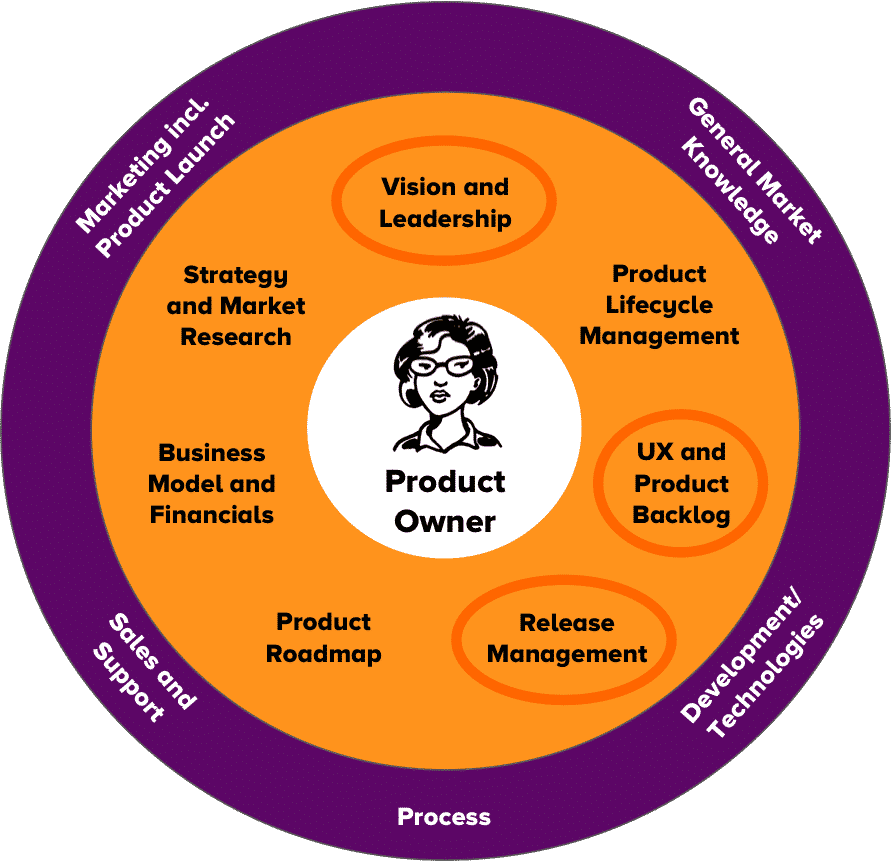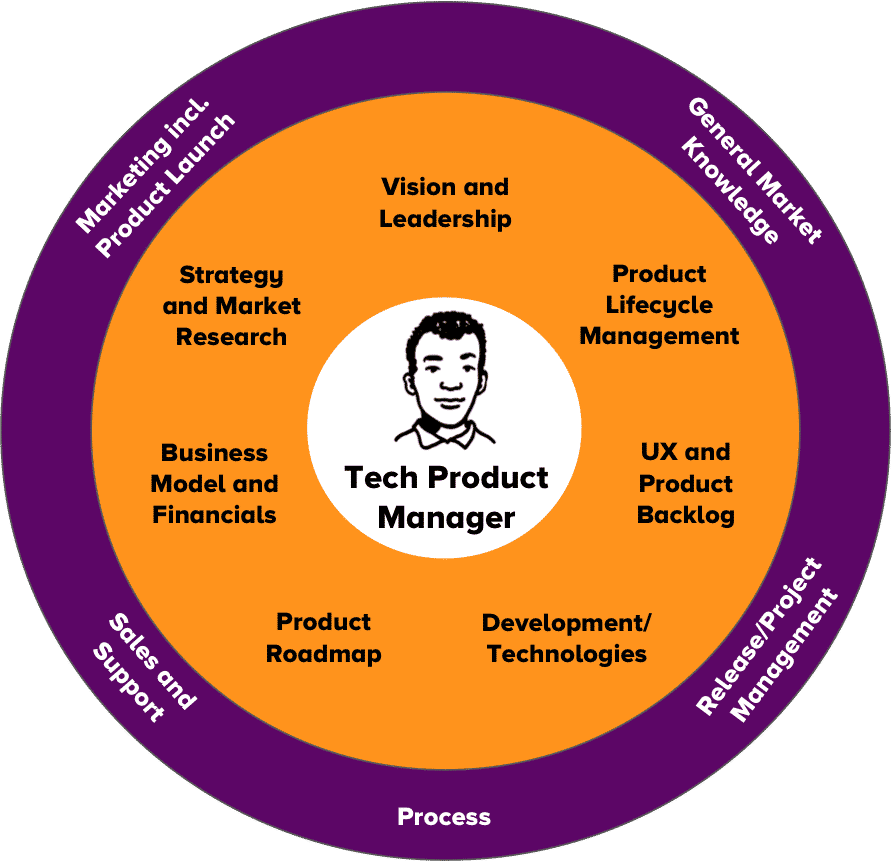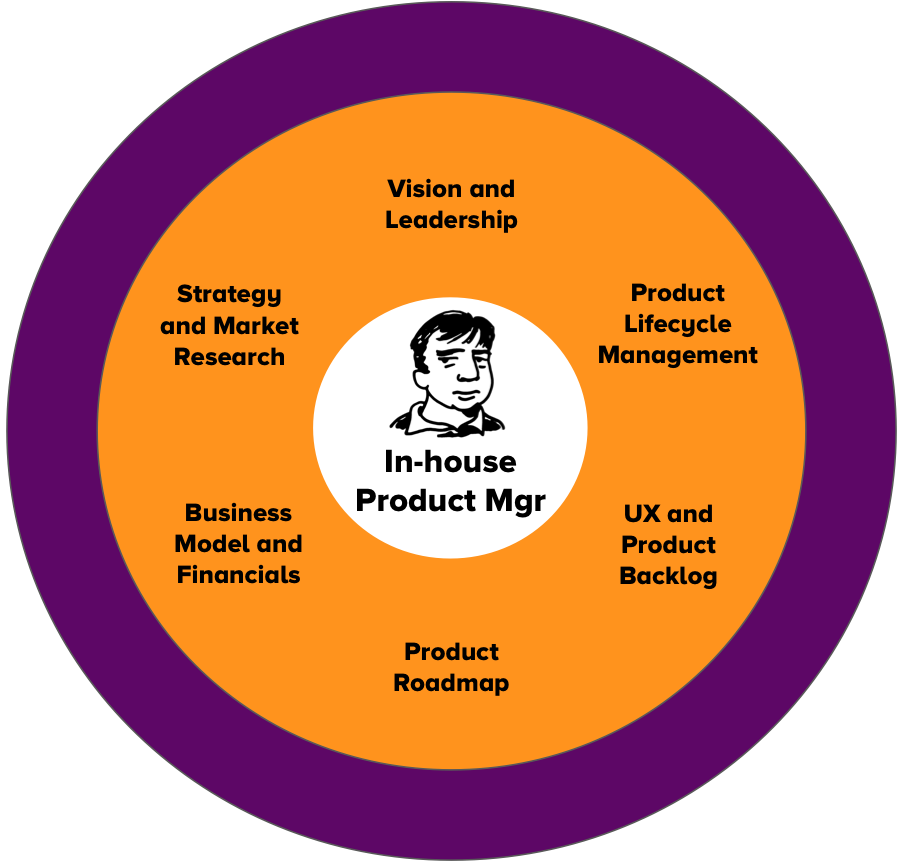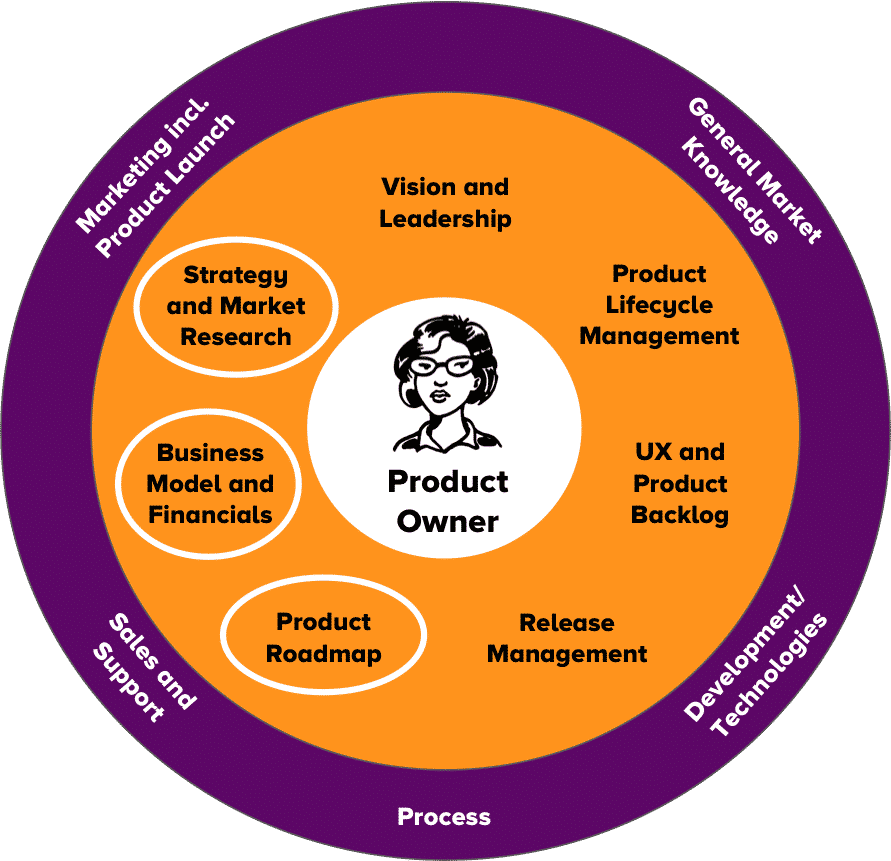What is Product Management?
Join the DZone community and get the full member experience.
Join For FreeI often get asked what it takes to be an effective product manager or product owner, which product skills the individuals should have, and how a company can strengthen its product management function. Answering these questions requires an understanding of what effective product management looks like in the digital age.
The following picture shows how I view product management: It depicts a product management framework that consists of six core knowledge areas and by six supporting ones. The core areas are orange and placed centrally. The supporting ones are purple and located at the edge of the circle. You can download the picture for free by simply clicking on it or from romanpichler.com/tools/product-management-framework.
The core areas are particularly important for doing a great job as a product manager or product owner. You should hence strive to become knowledgeable in all of them. The supporting areas are also important for your work, especially when you manage commercial products, but generally not as crucial.
If the product management framework with its knowledge areas feels overwhelming then don’t worry: Product management is a complex and demanding discipline that is not easy to master. It takes time and effort to become a competent product manager or product owner. The good news is that you can use the framework to spot gaps in your skill set so you can address them.
The Core Knowledge Areas
Vision and Leadership: Working as an effective product managers or product owner requires vision and leadership skills. You should be able to establish a shared vision, set realistic goals, and describe the benefits your product should deliver. You should be able to actively listen to others and negotiate to reach agreement and get buy-in. At the same time, you should not shy away from making the right product decisions even if they are tough and do not please everyone. You should be able to manage the stakeholders including customers and users, senior management, development, marketing, sales, support, and other business groups that have to contribute to the product success. You should be able to effectively communicate with and influence them. You be comfortable working with a broad range of people from diverse backgrounds including a cross-functional development team.
Product Lifecycle Management: Managing a product successfully involves more than getting it built and released. You should understand the product lifecycle with its stages and the key events in the life of your product including launch, product-market fit, and end of sales; you should know how the lifecycle helps you maximise the benefits your product creates across its entire life; this includes the lifecycle’s impact on the product performance (revenue and profits), the product goals, the pricing and the marketing strategy; the options to revive growth as your product matures and growth starts to stagnate; and the process best suited for each lifecycle stage. (An iterative, Lean Startup and Scrum-based process tends to beneficial while your product is young; Kanban is usually preferable when your product starts to mature.)
Product Strategy and Market Research: Your product exists to serve a market or market segment, a group of people whose need the product addresses. You therefore should be able to identify your target users and customers and segment the market; you should be able to clearly state the value proposition of your product, why people would want to use and buy it and why your product does a great job at creating value for them. You should be able to carry out a competitor analysis to understand their respective strengths and weaknesses; you should be able to position your product, and determine the values the brand needs to communicate. You should be able to perform the necessary market research work to test your ideas and assumptions about the market segment and the value proposition. This includes qualitative and quantitative methods including problem interviews, direct observations, and employing minimum viable products (MVPs); you should be able to leverage data to make the right decisions. This includes using an analytics tool, analysing the data effectively, and deciding if you should pivot and change your strategy or if you should persevere and refine it.
Business Model and Financials: To provide an investment incentive for your company and to make developing and providing the product sustainable, you have to be able to determine the value the product creates for your firm. You should be able to formulate and prioritise business goals, for instance, enter a new market, meet a revenue or profit goal, save cost, or develop the brand. You should be able to describe how your product’s value proposition is monetised and capture how the business model works including the revenue sources and the main cost factors. You should also be able to create a financial forecast or business case that describes when a break-even is likely to occur and when your product may become profitable. In practice, you may want to partner with a colleague from the finance department to carry out this work.
Product Roadmap: Many people have to contribute to the success of a digital product. To help them do their work and to provide visibility of how your product is likely to evolve, you should be able to create and use a product roadmap. This includes formulating realistic product goals (benefits), metrics and key performance indicators (KPIs), release dates or timeframes, and key features (deliverables or results). You should be clear on the relationship between the product strategy and the product roadmap. You should be able to formulate a go-to-market strategy and capture it in your roadmap. You should understand when the roadmap should be reviewed and changed.
User Experience and Product Backlog: A great product has to offer a great user experience (UX). You should be able to describe the desired user experience. This includes describing users and customer as personas, capturing the user interaction, the visual design, the functional and the non-functional aspects of your product together with the help of the cross-functional team (a UX/UI expert should be part of the team). You should be able to create scenarios, epics, user stories, storyboards, workflow diagrams and storymaps, and be able to work with user interface sketches and mock-ups. You should be able to stock and manage the product backlog, prioritise it effectively, and select sprint goals. You should know how to understand if you develop a product with the right features and the right UX, how to test the appropriate aspects of your product and how to collect the relevant feedback and data. This includes the ability to perform product demoes, solution interviews, usability tests, A/B tests, and direct observation. You should be able to use an analytics tool to retrieve the relevant data and be able to analyse it effectively. You be able to change (or “groom”) the product backlog using the newly gained insights.
Continue reading...
The Supporting Knowledge Areas
General Market Knowledge: Understand who your current customers and users are, what product you offer them today including their value proposition and business model, what competitors you have, how big your market share currently is, and which market segments you serve well.
Development/Technologies: Be a competent partner for development/IT/engineering, have an interest in software technologies, be comfortable collaborating with a cross-functional technical team.
Marketing: Be a respected partner for (product) marketing; be able to help select the right select the right marketing channels and to determine the right marketing mix; help marketing with creating the marketing collateral.
Sales and Support: Be a respected partner for sales and support; be able to help select the right sales channels and create the sales collateral and training.
Project/Release management: Be able to determine the primary success factor for a major release/product version and to steer the development project; be able to determine the project progress to forecast the progress, for instance, using a release burndown chart; be able to work with the Definition of Done; be able to trade-off scope, time, and budget.
Process: Have a good understanding of ideation and innovation processes to generate and select ideas and to bring new products and new features to life. These should include Customer Development/Lean Startup, Business Model Generation, Scrum, and Kanban.
Defining Product Roles with the Framework
My product management framework helps you define product roles and the skills and responsibilities they should have. Using the framework, I can, for instance, define the role of a product owner in the following way:

As the picture above shows, a product owner should have strategic product management skills such as product strategy and roadmapping as well as tactical ones (UX and product backlog). I have circled the areas, which are required by Scrum – the framework in which the role originated – in dark orange. The other areas are necessary to allow the product owner to do a great job and achieve product success even though they are not mandated by Scrum. You may, of course, disagree with my take on the product owner role and may want to use the framework to capture your definition of the role.
Another example of how you can apply the framework is the description of the role of a tech product manager, a product manager who looks after a technical product and requires more in-depth technology/development skills, as the following picture illustrates.

For instance, one of my clients is a major games development company, which has its own in-house developed physics engine, a complex piece of software that does all the clever animation. The product owner of the physics engine is a former developer. This makes sense, as the individual requires a detailed technical knowledge about the product and has to be able to communicate effectively with the users, the game developers.
If you work as a product manager who looks after digital products that are developed and used in-house, for instance, a finance or HR application, then you probably have to tailor the supporting areas as the following picture shows:

In the picture above, I have removed “Marketing” and replaced “Sales and Support” with “Operations”. I have kept “General Market Knowledge” as it is desirable for the product manager of a finance application to understand the market, that is, how the finance group works, what problems people struggle with, which products they use, and so forth.
Determining Learning Measures with the Framework
You can also use the product management framework to identify gaps in your skill set. Use the knowledge areas and reflect on your own knowledge. Then identify the areas where you lack some knowledge and skills, as I have done in the picture below by high-lightening the areas, which product owners often need to strengthen in my experience.

Then rank them by determining how much the lack of knowledge is preventing you from doing a great job. For instance, a lack of product lifecycle management and product roadmap skills may be hurting you most if you manage a product that is in the growth stage.
Finally identify how you best close the gap, for instance, reading one or more books, or blogs, attending a training course, finding someone to mentor or coach you, forming a community of practice with your fellow product managers or product owners to share knowledge and support each other.
You can do the same exercise for a group of product managers or product owners to identify learning measure for the entire function.
Learn More
You can learn more about specific areas such as vision and leadership, product strategy and market research, product roadmap, or user experience and product backlog by attending one of my training courses. I also teach my courses onsite and in from of interactive virtual training sessions.
If you would like me to help you apply the framework, define roles, or identify the right learning and development measures for product managers and product owners, then please contact me.
Published at DZone with permission of Roman Pichler, DZone MVB. See the original article here.
Opinions expressed by DZone contributors are their own.


Comments